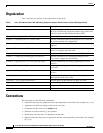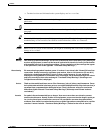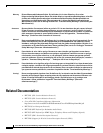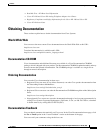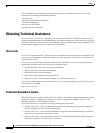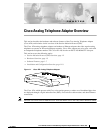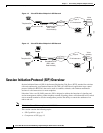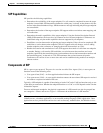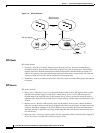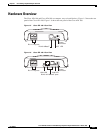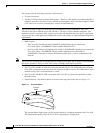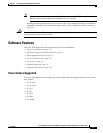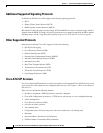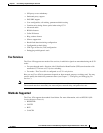
1-2
Cisco ATA 186 and Cisco ATA 188 Analog Telephone Adaptor Administrator’s Guide (SIP)
OL-3410-01
Chapter1 Cisco Analog Telephone Adaptor Overview
Session Initiation Protocol (SIP) Overview
Figure 1-2 Cisco ATA 186 as Endpoint in SIP Network
Figure 1-3 Cisco ATA 188 as Endpoint in SIP Network
Session Initiation Protocol (SIP) Overview
Session Initiation Protocol (SIP) is the Internet Engineering Task Force (IETF) standard for real-time
calls and conferencing over Internet Protocol (IP). SIP is an ASCII-based, application-layer control
protocol (defined in RFC3261) that can be used to establish, maintain, and terminate multimedia
sessions or calls between two or more endpoints.
Like other Voice over IP (VoIP) protocols, SIP is designed to address the functions of signaling and
session management within a packet telephony network. Signaling allows call information to be carried
across network boundaries. Session management provides the ability to control the attributes of an
end-to-end call.
Note SIP for the Cisco ATA is compliant with RFC2543.
This section contains the following topics:
• SIP Capabilities, page 1-3
• Components of SIP, page 1-3
V
Cisco ATA 186
Telephone/fax
Ethernet
Broadband CPE
(DSL, cable,
fixed wireless)
Broadband
SIP proxy
Layer 3
IP infrastructure
PSTN
Voice
gateway
72088
V
V
Cisco ATA 188
Telephone/fax
Ethernet
Broadband CPE
(DSL, cable,
fixed wireless)
Broadband
SIP proxy
Layer 3
IP infrastructure
PSTN
Voice
gateway
72444
V



